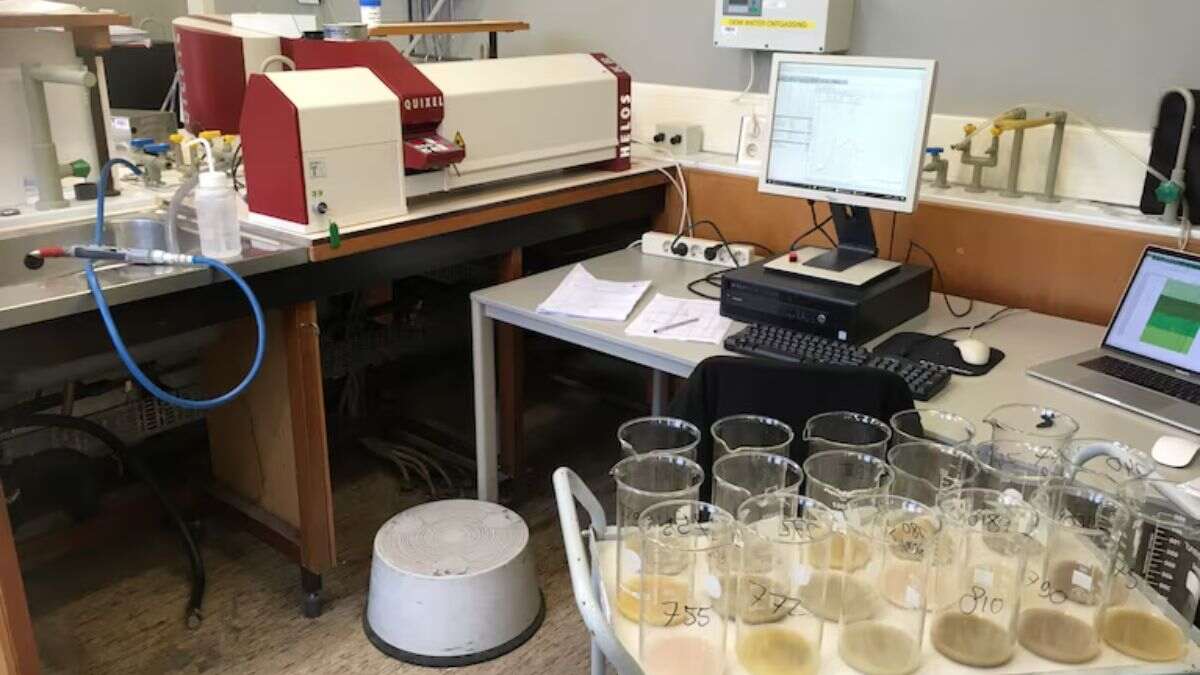A groundbreaking revelation unfolds in the realm of palaeontology and planetary science as a recent study in Nature Geoscience suggests that the formidable dinosaurs, those majestic creatures of ancient Earth, might have succumbed to their fate due to a cosmic veil of dust.
For decades, the scientific community has acknowledged the cataclysmic impact of a colossal asteroid on the Yucatán Peninsula some 66 million years ago. This seismic event, widely believed to have triggered a mass extinction, indiscriminately obliterated approximately three-quarters of Earth's species, including the majestic dinosaurs that once ruled our planet.
The Cataclysmic Impact and Mass Extinction
The aftermath of this cataclysmic occurrence has remained shrouded in uncertainty, with the spotlight often centred on the enigmatic "impact winter" – a period marked by pervasive cold and global darkness. 1980 bore witness to a theory suggesting that the asteroid upheaved a voluminous cloud of pulverized rock dust, effectively depriving plant life of vital sunlight. Recent investigations, however, have focused on the influence of light-blocking soot generated during the initial impact, the ensuing global wildfires, and the lingering sulfur aerosols unleashed by the cataclysmic event.
Investigating the "Impact Winter" Hypothesis
Deciphering the precise mechanisms behind this solar blockade and its temporal extent is of paramount importance, as it significantly shaped the course of life's evolution on Earth.
A prolonged period of darkness, incapacitating the photosynthesis process of plants could have triggered the collapse of the entire food chain. Grasping how life adapted and, in some instances, persevered amidst such an extreme climatic upheaval holds the potential to illuminate the spectre of future extinctions.
A Novel Research Approach
In pursuit of clarity, a novel research endeavour marries computer simulations with an in-depth analysis of sediment layers at the Tanis palaeontology site – a site that meticulously preserves the aftermath of the Chicxulub impact. The findings unveil a startling revelation: a colossal shroud of fine-grained dust enshrouded the planet, persisting in the atmosphere for a staggering 15 years. This protracted dusk cast a frigid pall over Earth, plunging temperatures by a staggering 60 degrees and stalling the photosynthesis process for a harrowing two-year interval.

Cem Berk Senel, a distinguished planetary scientist hailing from the Royal Observatory of Belgium, who spearheaded this study, emphasized, "The endurance of this dust in obstructing photosynthesis for such an extended duration presents a dire scenario. It could potentially instigate a cascading chain reaction of extinction that reverberates throughout the entirety of the Earth's intricate food chain."
The Role of Fine Dust Grains in Solar Blockade
Numerous scientific teams have diligently endeavoured to model the repercussions of the Chicxulub impact. This new study distinguishes itself by drawing upon data gleaned from the Tanis site in contemporary North Dakota, a site that was unveiled to the world in 2019. Unprecedented in its detail, Tanis immortalizes the immediate aftermath of the impact event, even allowing scientists to discern the specific season during which the dinosaurs met their end – a poignant moment in the late Cretaceous era, reminiscent of a spring day.

Senel's research team made a compelling discovery that elevates the significance of fine dust grains unearthed at the Tanis site. Remarkably akin in size to microscopic bacteria, these dust particles occupy a size range that ensures their persistence in the atmosphere for a remarkable 15-year span. This revelation implies that the dust particles played a more pivotal role in obstructing sunlight from reaching the Earth's surface than either soot particles or sulfur aerosols.
Clay Tabor, an esteemed assistant professor in the Earth Sciences Department at the University of Connecticut, expressed his admiration for this groundbreaking study, deeming it "fascinating." In 2020, Tabor authored a paper in Geophysical Research Letters, positing that soot from widespread fires served as a primary catalyst for the photosynthetic shutdown. The newfound insights into the dimensions of dust particles, as per Tabor, hold the potential to enhance climate simulations post-impact. According to the model employed by the researchers, the dust grains they unearthed could have endured in the atmosphere for an extended period, thereby contributing to a more profound reduction in surface sunlight compared to other light-blocking agents.
Comments
All Comments (0)
Join the conversation